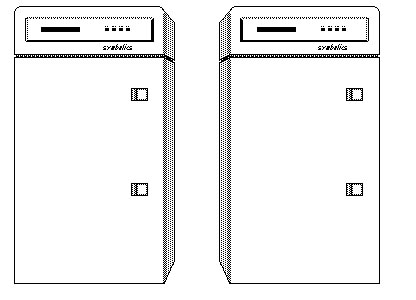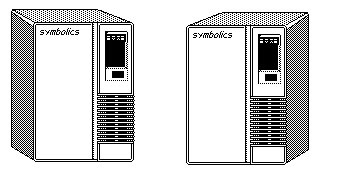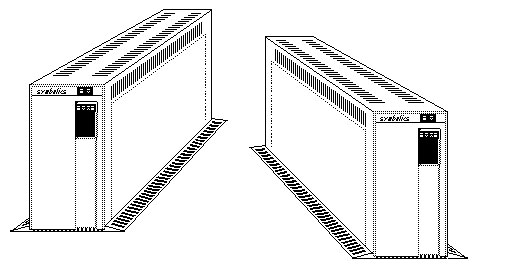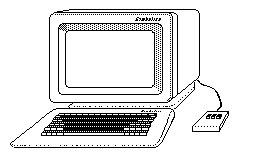Date: Fri, 10 Mar 1995 16:43:17 -0500
From: Allan C. Wechsler
Subject: Can’t sleep, so I’m sending mail instead
In the Dreamtime, prior to the introduction of the 3600, Symbolics was actually going to apply for patents for as many aspects of 3600 technology as we could get away with. So Knight and Holloway and maybe Kulp (my memory is that Moon was busy doing something more immediately useful) did a massive many-hours-long verbal brain-dump of everything they could think of about the 3600 hardware. The result was this bloody great pile of audio cassettes. In typical Symbolics fashion we hired a temp to sit _alone_ in a room transcribing these tapes, of which perhaps one word in three was ordinary non-technical English. The mistranscriptions in the result were, shall we say, rather thick on the ground. I can only recall two examples: “purple processor” consistently used for “peripheral processor”, and “air-cracked codes” for “error-correct codes”. It’s hard to wreck a nice beach.
The term “Zetalisp” was coined at a meeting in which we systematically eliminated every single other Greek letter. The obvious choice, “lambda”, later taken by LMI, was rejected on the grounds that the letter lambda was then being used as an emblem for the gay rights movement.
For several years, Howard Cannon collected unused railway spikes from around the tracks in back of our Vassar Street offices. Later his collection was either inherited or imitated by Dave Plummer (later Linden). In Dave’s hands the collection turned into a mobile, with each spike decorated with a little nametag, identifying someone with whom Dave had a pet peeve.
The ultimate origin of the custom was Prof. Hans-Lukas Teuber of MIT, who taught introductory brain science. Teuber entertained his captive audiences with an inexhaustible supply of bizarre brain-damage anecdotes, one of which concerned a railway worker named Phineas Gage, who while setting dynamite had a tamping rod driven vertically upward through his jaw and out the top of his skull. It lodged there, protruding in both directions. Gage remained conscious while he was taken to the hospital and while doctors removed the rod. He made a full organic recovery, but had serious frontal-lobe damage that altered his personality.
The moral we drew from this was perhaps not the intended one. It was, “People who act apparently normal may nonetheless be completely brain-damaged.” Dave’s rail spikes were iconic representations of the dozens of examples he had encountered.
In extremely early days, before the six or eight Symbolics employees moved into their new office on Vassar Street, Jeannine Mosely held a bicycle-repair workshop in the unimproved office space. About where Cari Barkei and later Thom Whitaker would eventually sit, Jeannine and Dave Moon and Penny Berman took their bikes to bits and put them back together again. Jeannine never worked at Symbolics, but I later married her.
John Lewicki’s father made all the original desks out of door blanks. I called them “Doorsks”. Moon kept his for years, long after everybody else had store-boughten desks. (Moon also retained an archaic set of editor key-bindings dating back to about 1974, rendering his Zmacs completely unusable by anyone except himself.)
The oldest Lisp Machine story I know goes back to MIT, before the Schism. Bill Gosper was visiting from the West Coast; he had come back to the AI lab specifically to exercise the new CADR arithmetic microcode. He sat down at a machine — I think it was LM6, in room 926 — and typed (+ 5 6). The result was 12. Gosper let out a howl and I came over to see what the problem was. He typed the form again, and this time the answer was 11. “You remember this, now,” Gosper said to me, “because unless I have a witness, nobody is going to believe me.” (There was no screen hardcopy facility yet.) We were never able to reproduce the failure.
Compilation by Allan C. Wechsler




